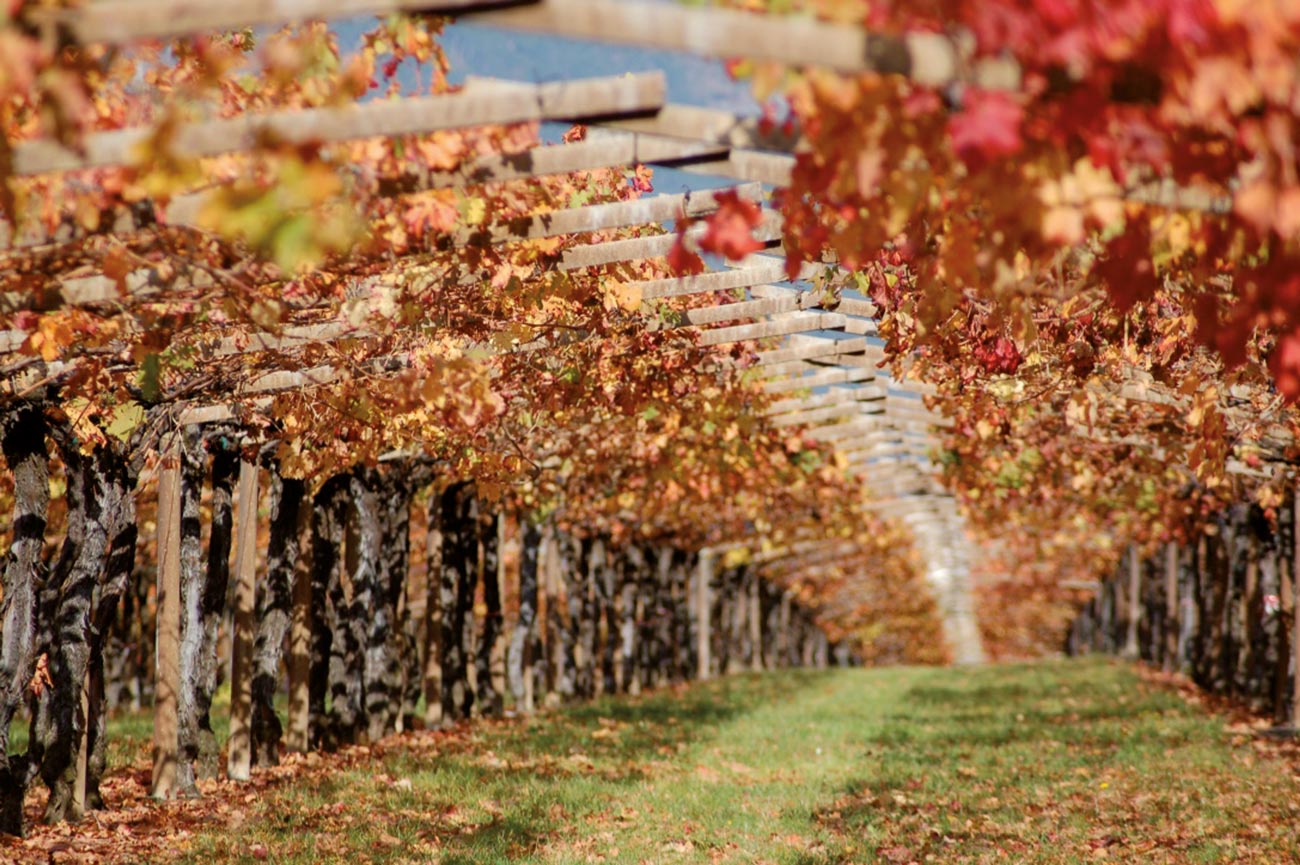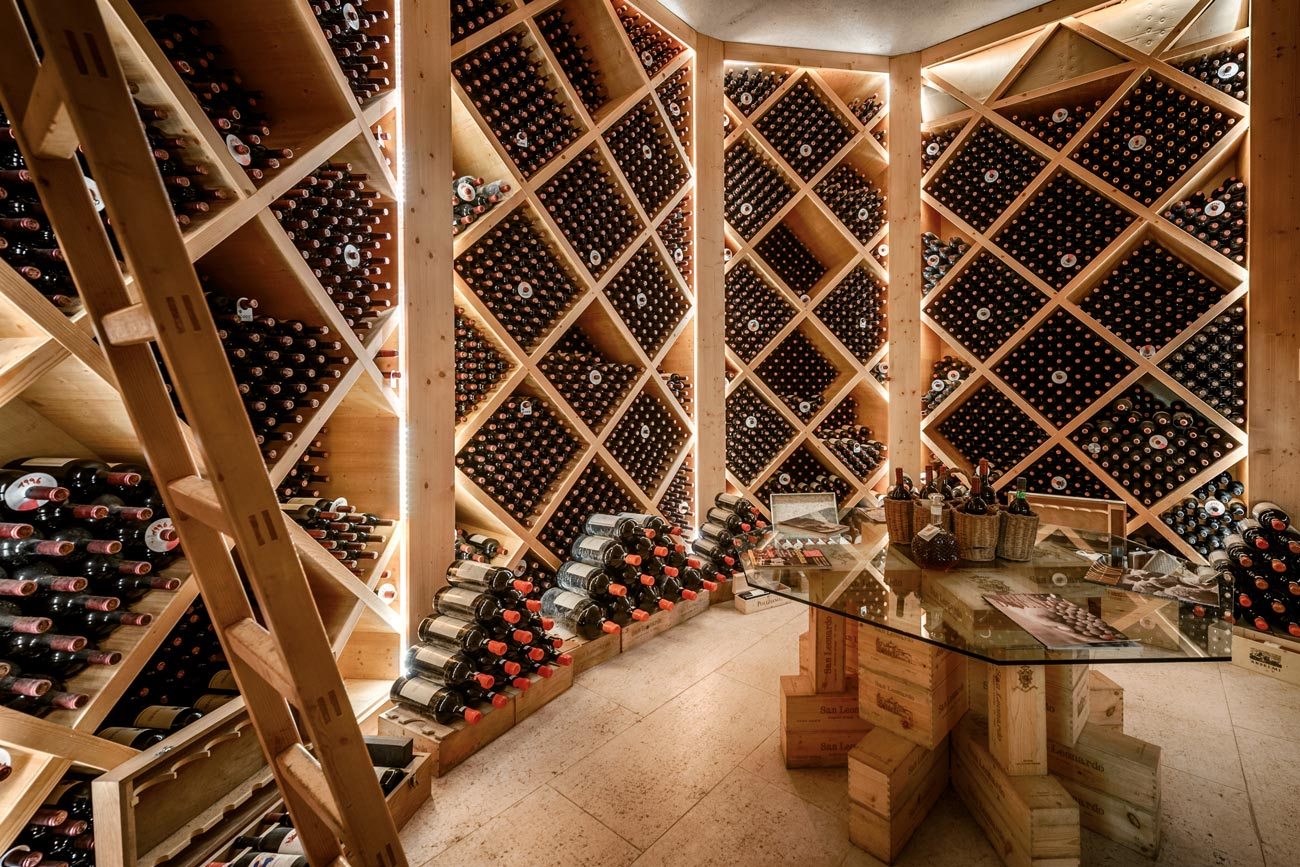THE SPIRIT
SPIRIT our
We are committed to crafting uniquely distinctive wines that will eloquently express their terroir and will convey our own spirit and personality, thanks to our painstaking attention to every individual detail, our striving for uncompromising quality, our meticulous management of the vineyards, and our patient work in the cellar
”
TERROIR
OF SAN
LEONARDO
the
The estate covers an overall area of 300 hectares, of which the vineyards, planted to red grapes beginning at an elevation of 150 metres, amount to 30 hectares. Merlot is planted in pebble-rich soils that were once the bed of a tributary of the Adige, while Cabernet Sauvignon and the old vineyards of Carmenère are in predominantly sandy soils. All are well-drained, low-fertility soils that yield wines with truly unusual levels of anthocyanins, and not just for the Trentino. In 2015, San Leonardo launched a project of conversion to organic viticulture, which ended successfully in late 2018 with the award of official certification. In the same year, the BWA Friends of Biodiversity organisation certified San Leonardo as a Friend of Biodiversity, testifying to San Leonardo ́s deep commitment to preserving the character of its growing area.

Campo “La Pineta”
Chalky soils witth medium organic content

Campo “Novali e Le Quare”
Clay, very well-drained soils

Campo “Ai Vignali”
Light, sandy soils

Campo “La Torre”
Significally chalky soils, rich in organic content
CLIMATE the
The estate lies in the Adige river valley, between the slopes of Monte Baldo and the Lessini Mountains. Winter snows often cover the vineyards, protecting them from severe cold, while during the vine’s growth period, a particularly felicitous climate favours cluster development and ripening of the grapes. Day-night temperature differentials, significant even in the summer months, not only heighten grape aromatics but also extend the ripening period. During the entire year, and particularly during the hottest months, the Ora del Garda wind blows over the vineyards, warming and drying the leaves, thus protecting them from fungal diseases—a true gift of nature.

The San Leonardo vineyards, at the foot of Monte Baldo
VINES AND
BREEDING FORMS
the
On the estate, the family has always grown international varieties. Carmenère, planted initially in the mid-1800s, is the true soul of San Leonardo wines; trained both on pergolas as well as to the guyot system, it gives character and identity to San Leonardo. Merlot, here since the early 1900s and trained to both pergola and spurred cordon, gives the wine its roundedness and smooth texture. Cabernet Sauvignon, finally, which Marchese Carlo planted in 1978, is trained exclusively to spurred cordon, and provides structure and elegance. Vine densities vary, depending on the training system, with guyot and spurred cordon at 6,200 vines per hectare and double pergolas at 1,800 vines.

The old vines of Carmenère, which in autumn take on a flame-red hue

The harvest, then as now
HARVEST the
The harvest, the most delicate moment of the year, takes place between mid-September and late October. The grapes are tasted and analysed on a daily basis to determine their optimal ripeness, on which will depend the sublime elegance of our the wines. The clusters are picked and immediately transported to the winecellar, where they are de-stemmed, pressed, and quickly put right into the tanks to preserve their freshness and aromas.
VINIFICATION
WINERY
the
The venerable fermentation cellar contains just vats built of concrete. Here, the red wines start fermentation spontaneously, without the help of technology or of cultured yeasts. These fermentations generally last not more than 15/18 days, during which they undergo multiple pumpovers and délestage. Once the fermentations are complete, the wine is drawn off and the remaining pomace is gently pressed under the watchful eye of San Leonardo’s cellar workers, who have passed down this art from generation to generation.

Viniication
BARRICAIA
CELLAR
the
As is often the case with older wine estates, the cellars are arranged on different levels. From the courtyard, one enters the fermentation cellar, which contains concrete vats, on several levels, built right after the First World War. Recently, the more ancient underground cellar, in the heart of the borgo, was re-structured, along with its large vats where lots of wine are blended. Only the underground barrel cellar, constructed in 2001, enjoys one large, dedicated space; here the wines undergo maturation, resting for at least 24 months in small oak barrels.

The Barricaia Cellar
SAN LEONARDO
WINERY
the
Lying in the heart of the tenuta is the estate’s wine library, which preserves, under perfect conditions, bottles of all the vintages made by San Leonardo, starting from its opening year in 1982. Every year, numerous bottles are stacked here, in various sizes, which will continue to refine and improve, each according to its own character. These vintage-dated wines will be released, in small lots, but only when they are able to express in perfect harmony their individual personality and the elegance that is their hallmark.
